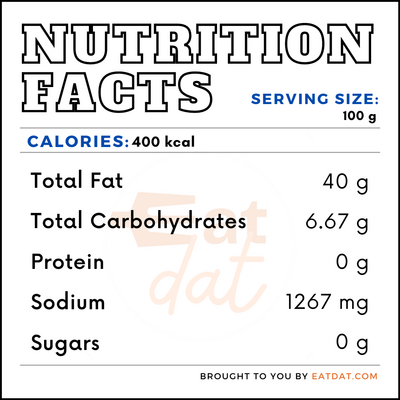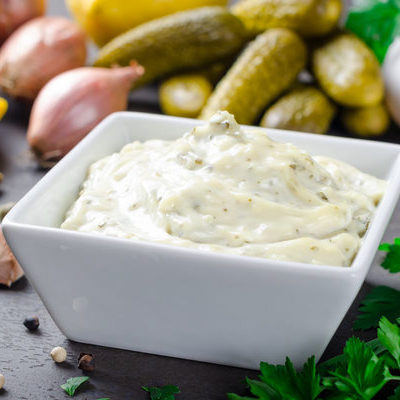In the United States, flavored mayonnaise is also called aioli; however, traditional this sauce only has garlic and olive oil in it.
Aioli can be paired with many dishes, including:
- Patatas Bravas
- Roasted Eggplant
- Pork Patties
- Grilled Vegetables
- Shrimp Burgers
Origin of aioli
This sauce is often compared to mayonnaise, but its origins are older. Pliny the Elder described a Roman sauce containing garlic and olive oil, very similar to modern versions, although he called it aleatum. According to historians, Italy is most likely where this originated at least 2,000 years ago. The first mention of aioli in an English publication was in 1907 when Le Guide Culinaire by Auguste Escoffier was translated into English. Today, it has been largely replaced by mayonnaise in many countries, though the Mediterranean region holds on to its favorite sauce.
Commercial production
Fresh aioli is time-consuming to make and only lasts about a week in the refrigerator. Most restaurants have their own special recipe. Egg yolks, salt, and crushed garlic must be blended together with olive oil to create this creamy condiment. The olive oil is added in increments until the base is thick. The process is continued until the sauce is completely homogenized.
Nutrition
A 100 g serving contains:

The two main ingredients in this sauce are garlic and olive oil. Garlic is a powerhouse of nutrition, with antioxidant, anti-microbial, and anti-tumor properties. It can help in preventing heart diseases, certain types of cancer, diabetes, and provides immunity against infectious bacterial and viral diseases. Olive oil also contains powerful antioxidants in the form of polyphenolic compounds, which have anti-cancer, anti-angiogenic, and anti-inflammatory properties. Olive oil also contains healthy fats, as well as good amounts of vitamins E and K.
Other nutrients offered by olive oil are calcium and potassium. Oleic acid makes up 55–80% of olive oil and keeps cholesterol and blood pressure in check. One serving of aioli can contain 60 calories of which 45 are from fat. Due to its high-fat content, it’s best to consume this condiment in moderation.
Aioli recipes
This sauce goes well with many vegetable and meat-based dishes. Here are some popular recipes:
- Grand Aioli
- Roasted Potatoes
- Lemon Basil Chicken
- Garden Vegetables
- New Potato Salad
- Egg Toast
- Roast Chicken
FDA regulations
This falls under the category of food dressings and flavorings and is strictly regulated by the FDA. In the US, aioli and mayonnaise are interchangeable. Mayonnaise is defined as the emulsified semisolid food prepared from vegetable oils, egg yolks, and acidifying ingredients.
References
Susan Waggoner, Aïoli, Sauce of the Ancients, Fork + Plate, https://forknplate.com/2015/02/25/aioli-sauce-ancients/
Bayan, Leyla et al. “Garlic: a review of potential therapeutic effects.” Avicenna journal of phytomedicine vol. 4,1 (2014): 1-14.
https://www.ncbi.nlm.nih.gov/pmc/articles/PMC4103721/
Gorzynik-Debicka, Monika et al. “Potential Health Benefits of Olive Oil and Plant Polyphenols.” International journal of molecular sciences vol. 19,3 686. 28 Feb. 2018, doi:10.3390/ijms19030686, https://www.ncbi.nlm.nih.gov/pmc/articles/PMC5877547/

